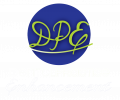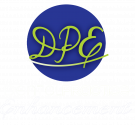Every practice will have some dental accounts receivable on the books. To some extent, it’s a good thing because it means you have a normal cash flow and patients who feel comfortable coming for regular treatment. But if you consistently carry a high accounts receivable that exceeds 30 days, it likely indicates a larger problem with your billing and insurance policies.
At Dental Practice Enhancement, we help dental offices achieve their full professional and financial potential. By analyzing your current business practices, we can develop individual strategies to help you improve collections and achieve financial health. Our virtual administrators can also take over your collections remotely, which can have untold benefits for you and your team.
To learn more about healthy dental accounts receivable or to inquire about our services, contact Dental Practice Enhancement today.
What is accounts receivable?
Dental accounts receivable (AR) is the amount of money owed to a practice for services rendered. It includes credit card payments that have not yet come through, as well as all treatments paid for with financing programs. Though AR is listed as an asset in your books, it directly affects the cash flow of your practice. Further, with the Consumer Price Index rising steadily month-by-month, by the time you receive payment (even just 30 days later), it is worth less money.
Determining the Health of Your Dental Accounts Receivable
Unless you were to implement a cash-only policy, you will inevitably carry some accounts receivable. So it’s important to assess the strength of your AR by calculating the accounts receivable turnover ratio (ART). To determine your ART, divide your net credit sales (this includes cash payments) by your average accounts receivable. To calculate the average accounts receivable, take the average of your beginning AR and your ending AR.
A high ART is better than a low ratio because it means you are quickly obtaining payment and converting credit sales to cash. Generally, an ART around 1.0 is considered good for a dental practice.
Strategies to Improve Your AR
If your ART is too high, there may be numerous factors at play. Though it will vary from practice to practice, there are some proven ways to lower your ART. These can include:
- Verifying insurance prior to treatment. This will prevent unpleasant surprises for patients and the inability to pay.
- Give your patients a clear outline of payment policies, including the consequences of late payment.
- Offer alternative payment methods, such as an online portal and text-to-pay options.
- Work your insurance aging report at least once a week.
- Make sure your administrative team has up-to-date training on insurance and financial policies. Dental Practice Enhancement offers this training among our other services.
- Outsource your accounts receivable and collections to our administrators. This could not only improve your dental accounts receivable; it could also strengthen overall efficiency and patient satisfaction, as your front office team will be better able to focus on these concerns.
Contact Dental Practice Enhancement
For an expert analysis of your current office practices or to learn about our virtual administrative services, contact us today.
Reach us online or call us at (833) DPE – FOR – U.




